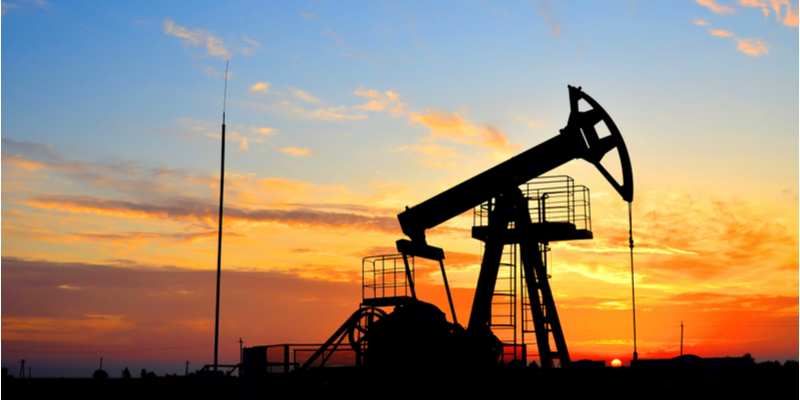Oil and gas security: risks and video surveillance solutions
- Featured Post
- Security for businesses

The oil and gas industry has suffered in recent years. Prices have tumbled since the “2014 Oil Glut”, when the global oil supply outstripped demand, leading to an overall market slowdown. The industry saw a second large hit to oil prices in 2020, as the coronavirus pandemic affected production and supply chains around the world. In April 2020 US oil prices fell below zero, the deepest fall in demand in 25 years.
In 2021, prices bounced back. In response to the drastic price drop of April 2020, OPEC+ (a group of 24 oil-producing nations) agreed to slow crude oil production in order to stimulate demand. Crude oil's price increased by 57.8% over 2021, reaching $76.54 per barrel in December 2021.
Despite a financially difficult few years, security threats to oil and gas companies haven’t changed. Before we look at the security threats, let's look in more detail at how the oil and gas industry is structured.
Upstream, midstream and downstream energy
Oil and gas goes through many processes before it reaches us as a whole range of end products. The industry is therefore broadly split into three segments, each of which handles different areas.
Upstream energy
Upstream energy is concerned with exploration and extraction of resources. Upstream companies explore areas worldwide in search of oil reserves. When they find reservoirs, they also handle production - drilling to extract the oil or gas. These activities can either take place onshore (on land) or offshore (at sea).
Midstream energy
Midstream energy focuses on the storage and transportation of oil and gas to refineries. Midstream energy firms manage pipelines, shipping, and storage of raw materials.
Downstream Energy
Downstream energy is the final part of the industry, concerned with refining raw materials and distributing the final products to the public and businesses. In the refining process, impurities are removed from the crude oil, at which point it can be further refined into different types of fuel (e.g. gasoline, kerosene, petroleum) and other products (e.g. asphalt, bitumen, petrochemicals).
Upstream, midstream and downstream energy accounts for the many businesses all involved in producing oil and gas products: rigs, production sites, pipelines, shipping vessels, refineries and distribution vehicles.
Oil and gas security risks
Multiple businesses all handling the same essential commodity creates many opportunities for crime to take place. As you can see from the list above, there are a number of locations where incidents could take place, from oil rigs and pipelines, to maritime ports and oil tankers (trucks). Threats such as theft, vandalism, piracy, terrorism, civil protest and organised crime all have the potential to cause severe financial damage, not to mention environmental damage. Accidents, faults and natural disasters also pose severe risks to oil and gas businesses.
Whether onshore or offshore, there is a very real need for on-site security. However, during an economically challenging time, business owners also need to ensure their operational costs remain manageable. Christopher Keeble, Security Surveillance and IT Manager at Danner’s Inc. describes the difficult situation his customers face:
“The oil and gas industry in Texas has been hard hit by the drop in oil prices, and lowering cost without affecting quality is king.
Our oil and gas clients store materials and equipment in large outdoor spaces which have traditionally been secured by security guards. In cases like these, our monitoring services lower security costs dramatically.”
It can be expensive to employ a sufficient number of security guards to protect large, often remote sites; integrating remote video monitoring provides a cost-effective solution for businesses who either can’t afford a large team of guards. It is also a great advantage for sites that are too hazardous for security guards, or where it would be impractical to have that level of physical security.
Oil and gas cybersecurity: a readiness gap?
On top of physical security risks, oil and gas businesses must also be vigilant when managing their cybersecurity risks too. In a 2017 survey conducted by the Ponemon Institute, just 35% of respondents rated their firm's cybersecurity readiness as high. The survey found that oil and gas businesses, who are increasingly reliant on digitised operational technology, have not caught up with the associated cybersecurity risks. Our Chief Revenue Officer considers the merging of cyber- and physical security to be a major trend for 2022 - read more about it here.
Want to know the secret to better security, greater ROI and more effective use of time and resources? Check out our FREE whitepaper:
Oil and gas video surveillance
Remote video monitoring provides 24/7 oversight of multiple sites, all from one control room. By using strategically placed cameras on remote sites, it is possible to monitor site safety around the clock using a much more compact team of video operators. If a threat is picked up on camera, operators can analyse it and mobilise on-site security guards and/or law enforcement in real time to intervene and manage the situation.
Depending on the type of site being secured, threats could come from a number of places; for example, when protecting offshore plants, underwater risks need to be considered as well as risks at plant level. In some cases, even aerial threats need to be taken account of. While remote video monitoring often takes place in an off-site control centre, it is possible to install a control room on-site, in order to keep a security ‘hub’ all in one place.
It is possible to use a variety of different surveillance equipment to provide a tailored solution for your site. For example, the UK-based Dragon Liquid Natural Gas facility has combined pan-tilt-zoom analog CCTV cameras with newer IP cameras, to receive more comprehensive footage.
Nonetheless, it is still logistically very difficult to protect oil and gas sites, due to the myriad risks involved. Even if a site has plenty of cameras trained on all areas, it becomes challenging for monitoring operators to remain vigilant when there is so much to watch out for. The job becomes even harder when operators receive false alarms.
Intelligent video analytics for the oil and gas industry
Security cameras and motion sensors are highly sensitive, and are designed to pick up even small movements. While this sensitivity is a positive thing, as it can quickly identify and alert operators to any movement on-site, often the alerts sent through are not caused by human activity, making them false.
The ‘noise’ created by false alarms can stop operators from identifying real incidents. Over the course of a shift, video monitoring operators can become tired and lose concentration, so staying alert to genuine alarms becomes even more difficult. Reducing the sensitivity of cameras and sensors is one way to reduce false alarms, but it runs the risk of missing genuine incidents.
A more effective solution is intelligent video analytics. AI-powered false alarm filtering systems like Calipsa can analyse the alarms sent by cameras to check for human activity. If an alarm doesn’t contain a person or a vehicle, intelligent video analytics software will filter it out, only submitting genuine alarms for human operators to review.
Not only does this save monitoring operators a great deal of time and energy, it also provides cost savings in the long run. Operators can do their job much more efficiently so they have the time and capacity to resolve real incidents.
These efficiencies also extend to physical security, since better intelligence results in fewer callouts for false incidents. Christopher Keeble explains how video analytics works for Danner’s Inc:
“When looking at motion activated video, the greatest number of false alarms come from the usual suspects: wind blown trash and leaves, flickering lights, and off-property vehicles passing by.
Analytics such as Calipsa give us the ability to focus on real intrusions instead of wasting manpower on video of leaves blowing across a laydown yard.”
For oil and gas companies looking to secure their sites and manage their operational costs, combining remote video monitoring with intelligent video analytics provides an effective and affordable solution, without cutting on the quality associated with more traditional security methods.
Want to learn more about how to protect your oil and gas business? Download our free whitepaper, which guides you on how event-based video monitoring offers a high-security, low-cost solution.









3 comments